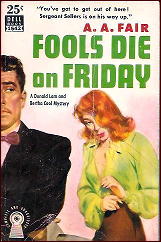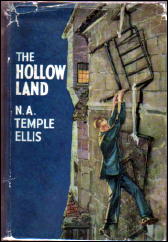Search Results for 'Josephine Tey'
Did you find what you wanted ?
Mon 3 May 2021
REVIEWED BY MIKE TOONEY:
(Give Me That) OLD-TIME DETECTION. Autumn 2020/Winter 2021. Issue #55. Editor: Arthur Vidro. Old-Time Detection Special Interest Group of American Mensa, Ltd. 36 pages (including covers). Cover image: The Radfords’ Who Killed Dick Whittington?
As is his usual wont, in this latest edition of Old-Time Detection Arthur Vidro has once again delivered a valuable compendium of information about classic detective fiction, resurrecting long-forgotten pieces as well as showcasing up-to-date commentary about the genre.
When, in 1951, Howard Haycraft and Ellery Queen (the editor) got together to compile a list of what they considered to be a “Definitive Library of Detective-Crime-Mystery Fiction,” they probably had no idea that their compilation (commonly called the “Haycraft-Queen Cornerstones”) would still be worth consulting seventy years later. One of their choices for the list is Clayton Rawson’s locked room classic Death from a Top Hat (1938), which receives Les Blatt’s scrutiny. Another “cornerstone” is Somerset Maugham’s Ashenden (1928), which Michael Dirda, in contrast to the usual consensus opinion, does not regard as “the first modern espionage novel.”
Two now largely forgotten detective fiction novelists worth spotlighting are the married writing team of E. and M. A. Radford; they receive their due attention in Nigel Moss’s essay, which sadly notes that despite a long writing career “the U.S. market eluded them.” Moss also highlights the play, that rare theatrical bird, an honest-to-goodness whodunnit, derived from the Radfords’ sixth novel, Who Killed Dick Whittington? (1947).
While he was still living, impossible crime expert Edward D. Hoch turned his attention to Agatha Christie’s short fiction and found most of it praiseworthy: “If the short stories often are not the equal of the best of her novels, they still sparkle on occasion with her vitality and ingenuity, reminding us anew of the pleasure of a well-crafted tale.”
Dr. John Curran, the world’s foremost expert on all things Christie, has nice things to say about Mark Aldridge’s Poirot: The Greatest Detective in the World, in his opinion a “must-have book for the shelves of all fans of the little Belgian and his gifted creator.” Curran also includes little-known facts about Agatha, only a few of which yours truly was aware.
Continuing with the Christie theme is a talk by Leslie Budewitz aptly entitled “The Continued Influence of Agatha Christie”; “she was,” says Budewitz, “first and foremost a tremendous storyteller.”
Then come a couple of apposite reviews, both by Jay Strafford: Sophie Hannah’s The Killings at Kingfisher Hill (2020), starring Hercule Poirot; and Andrew Wilson’s I Saw Him Die (2020), the fourth in a series of novels making the most of that Queenian fictional trope of featuring a detective fiction writer as, well, an amateur detective.
The center piece of this issue of OTD, both figuratively and literally, is Stuart Palmer’s entertaining story “Fingerprints Don’t Lie” (1947), in which Hildegarde Withers, sans Inspector Piper, solves a knotty murder in Las Vegas.
Continuing with Charles Shibuk’s series of paperback reprints from the ’70s (at the time a noteworthy and welcome trend for classic mystery buffs), he highlights works by Nicholas Blake (Mystery*File here), Charity Blackstock (Mystery*File here), John Dickson Carr (of course!; Mystery*File here ), Agatha Christie (also of course!; Mystery*File here), Raymond Chandler (ditto; Mystery*File here), Henry Kane (Mystery*File here), Patricia Moyes (Mystery*File here), Ellery Queen (Mystery*File here), Dorothy L. Sayers (Mystery*File here), Julian Symons (Mystery*File here), Josephine Tey (Mystery*File here), and editor Francis M. Nevins’s (Mystery*File here) nonfictional The Mystery Writer’s Art, “obviously the logical successor to Howard Haycraft’s The Art of the Mystery Story (1946) . . .”
Several pages of contemporary reviews of (mostly) classic mysteries follow: Jon L. Breen about Robert Barnard’s School for Murder (1983/4) and Evan Hunter’s “factional” Lizzie (1984); Harv Tudorri about Ed Hoch’s Challenge the Impossible (2018); Ruth Ordivar about Erle Stanley Gardner’s The Case of the Angry Mourner (1951); and two reviews from Arthur Vidro about Barbara D’Amato’s The Hands of Healing Murder (1980) and John Ball’s In the Heat of the Night (1965): “with maturer re-reading, I am dazzled . . .”
The issue wraps up with letters from the readers and a befitting puzzle about Agatha Christie.
All in all, Issue 55 is definitely worth adding to your collection.
If you’d like to subscribe to Old-Time Detection:
Published three times a year: spring, summer, and autumn. – Sample copy: $6.00 in U.S.; $10.00 anywhere else. – One-year U.S.: $18.00 ($15.00 for Mensans). – One-year overseas: $40.00 (or 25 pounds sterling or 30 euros). – Payment: Checks payable to Arthur Vidro, or cash from any nation, or U.S. postage stamps or PayPal. – Mailing address: Arthur Vidro, editor, Old-Time Detection, 2 Ellery Street, Claremont, New Hampshire 03743.
Web address: vidro@myfairpoint.net
Tue 17 Nov 2020
REVIEWED BY MIKE TOONEY:
(Give Me That) OLD-TIME DETECTION. Summer 2020. Issue #54. Editor: Arthur Vidro. Old-Time Detection Special Interest Group of American Mensa, Ltd. 36 pages (including covers). Cover image: Unusual Suspects.
The latest issue of OLD-TIME DETECTION (OTD) continues to maintain the high quality it has always enjoyed. Editor Arthur Vidro’s choices of material are, as usual, excellent; the world of classic detective fiction, long neglected, gets a new lease on life with every number.
Indeed, nothing says “classic detective fiction” like commentary from Edward D. Hoch, an expert on the subject as well as a shining example of how to write it. Vidro reproduces two introductions by Hoch to mystery story collections.
Ed Hoch’s fiction output is the envy of many writers, almost always matching quantity with quality. In his review of Crippen & Landru’s latest themed collection of Hoch’s stories, Hoch’s Ladies, Michael Dirda says it well: “His fair-play stories emphasize a clean, uncluttered narrative line, just a handful of characters, and solutions that are logical and satisfying. Each one sparks joy.”
Next we have a valuable history lesson by Dr. John Curran concerning the earliest periods of the genre, “‘landmark’ titles in the development of crime fiction between 1841 and the dawn, eighty years later, of the Golden Age,” especially as reflected in the publications of the Collins Crime Club.
Following Dr. Curran is a collection of perceptive reviews by Charles Shibuk of some pretty obscure crime fiction titles; for instance, have you ever heard of Brian Flynn’s The Orange Axe (“highly readable, steadily engrossing, well-plotted, and very deceptively clued”) or James Ronald’s Murder in the Family (“an absolute pleasure to read from first page to last”)?
Cornell Woolrich was definitely not ignored by Hollywood, as Francis M. Nevins shows us in his continuing series of articles about cinema adaptations. The year 1947 was a rich one for films derived from Woolrich’s works — Fall Guy, The Guilty, and Fear in the Night — but, as Nevins indicates, the quality of these movies is highly variable.
William Brittain is a detective fiction author who has been undeservedly “forgotten” of late, but a reprinting of one his stories (“The Second Sign in the Melon Patch”, EQMM, January 1969) shows why he should be remembered: “She wondered if anyone in Brackton held anything but the highest opinion of her would-be murderer.”
Charles Shibuk returns with concise reviews of (then) recently reprinted books by John Dickson Carr, Agatha Christie, Anthony Dekker, Ngaio Marsh, Ellery Queen, Dorothy L. Sayers, and Josephine Tey.
Dr. John Curran also returns. The world’s leading expert on Agatha Christie tips us off as to developments in Christieworld: a new short story collection, the closure of the long-running play The Mousetrap as well as the cancellation of the in-person Agatha Christie Festival and uncertainty about the release date for Kenneth Branagh’s version of Death on the Nile due to the beerbug, the publication of a new non-fiction book focusing on Hercule Poirot, and a radio play version of a previously unperformed non-criminous production by Dame Agatha dating from nearly a century ago.
This is followed by a collection of smart reviews by Jon L. Breen (The Glass Highway by Loren D. Estleman), Amnon Kabatchnik (The Man in the Shadows by Carroll John Daily), Les Blatt (The Chinese Parrot by Earl Derr Biggers), Ruth Ordivar (The World’s Fair Murders by John Ashenhurst), Arthur Vidro (The Kettle Mill Mystery by Inez Oellrichs), and Thor Dirravu (The Ten Faces of Cornell Woolrich, a collection).
Next we have Martin Edwards’s foreword to Joseph Goodrich’s collection of essays entitled Unusual Suspects (2020), which, Edwards is delighted to relate, “benefits from a quirky unpredictability and from being a mine of intriguing nuggets of information.”
Rounding out this issue are the readers’ reactions and a puzzle page, the latter a snap only if you’re thoroughly familiar with the life and career of Hercule Poirot.
Altogether this is a most satisfying issue of OLD-TIME DETECTION.
—
If you’re interested in subscribing: – Published three times a year: spring, summer, and autumn. – Sample copy: $6.00 in U.S.; $10.00 anywhere else. – One-year U.S.: $18.00 ($15.00 for Mensans). – One-year overseas: $40.00 (or 25 pounds sterling or 30 euros).
Payment: Checks payable to Arthur Vidro, or cash from any nation, or U.S. postage stamps or PayPal.
Mailing address: Arthur Vidro, editor, Old-Time Detection, 2 Ellery Street, Claremont, New Hampshire 03743.
Web address: vidro@myfairpoint.net
Mon 16 Sep 2019
(Give Me That) OLD-TIME DETECTION. Summer 2019. Issue #51. Editor: Arthur Vidro. Old-Time Detection Special Interest Group of American Mensa, Ltd. 36 pages (including covers). Cover image: Whodunit? Houdini?
ONCE AGAIN Arthur Vidro has brought forth a publication worth your attention, with a satisfying variety of articles about Golden Age of Detection (GAD) authors and their works, some from yesteryear and some contemporary. In case you haven’t noticed it, the GAD “renaissance” continues apace, and every issue of Old-Time Detection (OTD) serves as a fine compendium of information for both the experienced GADer (yes, it’s now a word) and the newcomer to this era of the “mystery” genre.
If you’re a Edward D. Hoch fan like us, you’ll appreciate a new series in OTD, “The Non-Fiction World of Ed Hoch,” featuring “a run of reprint pieces penned by” the latter-day master of the impossible crime short story, compiled by Dan Magnuson, Charles Shibuk, and Marvin Lachman. Hoch’s knowledge of the “mystery” field was practically unbounded, and what he had to say about it is always worth your notice.
Between the two World Wars the “mystery” story underwent a sea change from genteel drawing room bafflers to the hardboiled outlook, signaling the “death” of the formal whodunit as it was then known—or so people have been told. Jon L. Breen begs to differ; in “Whodunit? We’ll Never Tell but the Mystery Novel Is Alive and Well” he gives us just the facts, ma’am.
J. Randolph Cox focuses the Author Spotlight on Craig Rice (Georgiana Ann Randolph), known to most readers for her wild and woolly mysteries featuring lawyer John J. Malone, saloon owner Jake Justus, and Justus’s wealthy and beautiful wife Helene. Rice took the relatively understated screwball social dynamics of Hammett’s The Thin Man and pushed them to the limit: “In a genre in which death can be a game of men walking down mean streets unafraid to meet their doom,” writes Cox, “she wrote of men whose fearlessness came from a bottle—from several bottles, in fact—and made it seem comical.” However, “The drinking which she made amusing in print was not amusing in her own life.”
Thanks to a veritable explosion of paperback reprints of classic detective and mystery stories in the 1960s and ’70s, as well as the works of newer authors, the world of GAD-style fiction was kept from total extinction in the face of the hardboiled onslaught, as Charles Shibuk told us in his Armchair Detective reviews of the period.
Among the writers who enjoyed this attention from the publishers: Margery Allingham (“I’m convinced that Allingham’s best shorts are of greater value than her novels”), Eric Ambler (“The decline of this writer’s skills during the 1960s has been sad to contemplate . . .”), Nicholas Blake (“Here is another writer whose recent efforts are best left unmentioned, with one notable exception . . .”), John Dickson Carr (“This author’s best work was published between 1935 and 1938 . . .”), Agatha Christie (“If you have not read it, do not on any account miss Cards on the Table“), S. H. Courtier (“. . . obviously the logical successor to the late Arthur W. Upfield”), Amanda Cross (“. . . has only produced three novels in seven years . . .”), Andrew Garve (“. . . prolific and usually reliable . . .”), Frank Gruber, Ngaio Marsh (“Like fine wine, this author improves with age”), Stuart Palmer (“. . . his work was highly competent and always entertaining”), Ellery Queen (“. . . The Spanish Cape Mystery, which represents the last chapter in Queen’s first and best period”), Julian Symons (“Recent work has shown an attempt to return to form . . .”), Josephine Tey (“. . . I don’t think this is ultimately the stuff of which detective stories are really made”), and Raoul Whitfield (“. . . here is a rare opportunity to examine the work of an unjustly forgotten contemporary of Dashiell Hammett”).
Next, Marvin Lachman offers an affectionate memento of Lianne Carlin who, as a fanzine editor-publisher, was one of the major forces responsible for nurturing mystery fandom and keeping interest in the genre alive and well.
Dr. John Curran covers the world of Agatha Christie as no one else can: a seldom-seen and different play version of Towards Zero from 1945 (“The plot of both stage versions is, essentially, the same as the novel, as twisty a plot as any that Christie every devised”); Tony Medawar’s impending Murder She Said; The Agatha Christie Festival (“. . . in keeping with the last few years, is disappointing”); and Christie Mystery Day (“. . . no one knows what to expect until it begins”).
In “Zero Nero . . . Well, Almost”, George H. Madison offers a good summary of the finer points of Rex Stout’s popular series (46 books!) but ruefully explains why “our Nero will not be revived on screen this generation.”
As we mentioned earlier, a new feature of OTD reprises “feature articles and introductions written by Edward D. Hoch,” the first one being his preamble to the Index to Crime and Mystery Anthologies from 1990. “Here is a book,” says Hoch, “to make an addict out of any reader of short fiction.”
Amnon Kabatchnik’s summary article about Maurice Leblanc’s Arsene Lupin promises to tell us about “Lupin on Stage, the Screen, and Television,” and delivers nicely. It’s ironic that Leblanc, however, fell into the same trap that the creator of Sherlock Holmes did: “After the unexpected blockbuster popularity of Lupin, he found, as Conan Doyle had before him, that the public wanted him to produce stories and novels only about his most famous character and nothing else.”
The fiction offering in this issue is William Brittain’s “The Last Word” (EQMM, June 1968), with the author using the “James Knox” alias to signal that it won’t be one of his popular Mr. Strang adventures.
One of the best anthologies from the ’70s is Whodunit? Houdini? Thirteen Tales of Magic, Murder, Mystery (1976), which, despite its title, is not a collection of fantasy stories but mystery and detective adventures by Clayton Rawson, Rudyard Kipling, John Collier, Carter Dickson, Manuel Peyrou, Frederick Irving Anderson, Rafael Sabatini, William Irish, Walter B. Gibson, Ben Hecht, Stanley Ellin, and Erle Stanley Gardner, seasoned authors who knew how to write engrossing fiction.
Perceptive as always, in “Allure of Classic Whodunits” Michael Dirda tells us about the “distinct sense of well-being and contentment” he feels at what modern critics would regard as a defect, the artificiality that has become a “welcome attraction in many vintage who-and-howdunits,” stories which “deliberately leave out the messiness of real life, of real emotions, thus allowing the reader to mentally just amble along, mildly intrigued, feeling comfortable and even, yes, cozy,” putting the reader “a long way from deranged fantatics armed with semiautomatic weapons,” and, thus, engaging the mind rather the emotions, which is where the detective story had its beginnings (thanks, Edgar).
To wrap up this issue there are letters to the editor and a puzzle page that isn’t as easy as some. If you don’t already have a subscription to Old-Time Detection, here’s how to get one: It’s published three times a year: spring, summer, and autumn. A sample copy is $6.00 in the U.S. and $10.00 anywhere else. A one-year subscription in the U.S. is $18.00 ($15.00 for Mensans) and overseas is $40.00 (or 25 pounds sterling or 30 euros). You can pay by check; make it payable to Arthur Vidro; or you can use cash from any nation, or U.S. postage stamps, or PayPal. The mailing address: Arthur Vidro, editor, Old-Time Detection, 2 Ellery Street, Claremont, New Hampshire 03743. Arthur’s Web address is vidro@myfairpoint.net.
Mon 5 Nov 2012
FIRST YOU READ, THEN YOU WRITE
by Francis M. Nevins
For my last column I revisited one of the Bertha Cool/Donald Lam novels written by Erle Stanley Gardner as A.A. Fair, and for this one I tackled another. Fools Die on Friday (1947) is more straightforward than Bedrooms Have Windows and the plotting more under Gardner’s control.
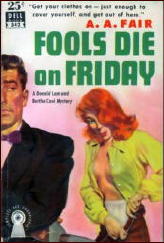
The firm is hired to protect a real-estate tycoon from having his food poisoned by his second wife, who married him after his first wife died of, you guessed it, food poisoning. Donald quickly catches on that his new client isn’t who she claims to be. Then he devises a scam to delay the poison plot by posing as PR man for a manufacturer of anchovy paste and offering to put Wife Two in ads for the product.
The realtor is poisoned anyway — with arsenic in the paste Donald left at his house as samples — and so is his wife. He recovers but she doesn’t. Then his secretary is strangled and Donald finds the body. Mixed into the ragout are a devious dentist, a machine that handicaps horse races, and a wandering package of arsenic.
There’s very little detection in this opus, but the pace is furious (as usual with Gardner) and the climax, with one character literally getting away with murder, would never have been allowed in a contemporaneous Perry Mason novel since the Masons were being serialized in the Saturday Evening Post and the Cool/Lam books weren’t.
Among other dividends in Fools Die we get to learn a new word. In Chapter 5 Cool tells Lam she’s trying to get the firm’s client “in a position where she has to pungle up more money.†In Chapter 15 she asks him: “You pungled up a hundred bucks in cold cash on the nose of one pony on the strength of it [i.e. the handicapping machine]?â€
I’ve never seen the word before in my life but Webster’s New International Dictionary assures me that it’s a genuine verb, meaning to pay or contribute. I wonder where Gardner came across it.
Ever hear of Walter Kaufmann? He was born in Germany of Jewish parents in 1922, left his homeland on a scholarship to an American college just before Hitler launched World War II, returned to Germany with Military Intelligence during the war, and eventually was hired by Princeton University as a professor of philosophy. I discovered him in my teens and have been reading him all my life.
Why am I recounting all this here? Because in one of his best-known books, Critique of Religion and Philosophy (1958), he tossed off a comment about our genre that is well worth preserving:
“Even as it is the fascination of a detective story that the truth is finally discovered on the basis of a great many accounts of which not one is free of grievous untruths — even as it is sometimes given to the historian to reconstruct the actual sequence of events out of a great many reports which are shot through with lies and errors…â€
The balance of this sentence is for our purposes (if I may cite a Gardnerism) incompetent, irrelevant and immaterial. I wouldn’t be surprised to learn that among Kaufmann’s favorite whodunits were those in which the detective acted as historian, for example Ellery Queen’s The Murderer Is a Fox (1945) and Josephine Tey’s The Daughter of Time (1952).
We’ll never know for sure. Kaufmann died horribly in 1980 at age 58. Anyone interested in the details can access his brother Felix Kaufmann’s account of his death by googling both men’s names.
Still bogged down as I am in the index for The Art of Detection, I’ll pad out this column to its usual length with the help of that nonpareil, that nonesuch, that Ed Word of the written wood, Michael Avallone.
Over the decades I’ve culled from his 200-odd novels well over a thousand prime specimens of the Avalloneism. Both Bill Pronzini and I as well as some others have offered samples taken from his Ed Noon PI novels, but readers of this column are less likely to have seen those he perpetrated in the dozens of paperback Gothics he wrote under female bylines back in the Sixties.
From The Second Secret, as by Edwina Noone (Belmont pb #B50-686, 1966) I’ve harvested 7½ single-spaced pages of howlers, which I hope to dole out over the next several columns. Page numbers are provided in case anyone wants to quote these in an academic journal. Hold onto your hats and here we go:
The tree had come to represent the rainbow of wishful thinking. (9)
He had been gone four long years and Cherry Williams had never stopped loving him. Like the red oak tree, she could not remember a time when she hadn’t loved dark-haired, handsome, surly Adam Freneau. (10)
The sturdy frame of his muscular young body, presaging the manhood that was to come, had engraved itself on her heart. (11)
She had only to say his name to herself or see his face in her fancies and the blood in her body would stir warmly. (13)
Cherry felt her heart stop beating, the lungs in her bosom squeeze unbearably. (14)
For a wild second, she wanted to run.
But her legs refused to heed the random irresolution of her mind. (14)
The tone of the words were worldly weary, yet unmistakably condescending. (16)
A mammoth, all-encompassing scarlet flare of color seemed to paint the world in flaming colors. (19)
(B)oth women could now hear the far off clang and trumpetry of the fire bells strategically placed all over Englishtown and vicinity. (20).
Miraculously, the stone pillars and colonnades had held off the worse that the flames could do. (20).
Of course, any number of Avallone’s Gothics are utterly devoid of such gems. When I find one of these I usually fling it across the room, snarling: “Why did I pungle up good money for this garbage? Someone edited it!†But so many of his immortal works are so lavishly studded with verbal cow pies that I could keep quoting like this till at least my 90th birthday. If there should be one.
[Editorial Comment.] 11-7-12. By the time Dell got around to reprinting their 1951 edition of Fools Die on Friday (#542), the first cover was considered risque enough that some changes had to be made. See below:
Wed 19 Oct 2011
Posted by Steve under
Reviews[6] Comments
A REVIEW BY RAY O’LEARY:
COLIN DEXTER – The Wench Is Dead. St. Martin’s Press, US, hardcover, 1990; Bantam, US, paperback, 1991. First published in the UK: Macmillan, hardcover, 1989. Reprinted many times since. TV Film: ITV/PBS; Season 11, Episode 1 of Inspector Morse in the UK. (11 November 1998), with John Thaw as Chief Inspector Morse.
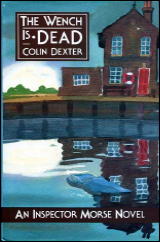
Colin Dexter borrows the premise of one of the finest Mystery novels ever, despite what some may think, Josephine Tey’s The Daughter of Time, and has Inspector Morse try his hand at investigating a historical crime from his hospital bed.
This crime, however, isn’t nearly as famous as the Richard III murders, and judging by the book’s Dedication, the names of people involved in the case were changed and some of the circumstances fictionalized.
Morse, in Hospital (as they say over there) with ulcers, is given a short Vanity Press tome by the widow of its author, who was Morse’s short-lived roommate. Bored nearly to death himself, Morse reads what seems to be a straightforward account of an 1859 murder; slowly, over several days, absorbing all the facts of a case in which three Oxford canal boat crewmen were convicted of a passenger’s murder, Morse becomes convinced that there was something wrong about the case, and with the aid of Sgt. Lewis and the daughter of another patient, comes up with his own solution.
I sampled a couple of Morse novels several years ago, well before he became Hot Stuff on Mystery!, and I must admit they didn’t make much impression on me. I picked this one up for its resemblance to the Tey classic, and because the nice lady running the Library Used Book Sale kept insisting I could squeeze a few more books in my bag for the “Buck a Bagful” sale.
All I can say is I enjoyed it much more than I had expected.
Tue 10 May 2011
THE BACKWARD REVIEWER
William F. Deeck
N. A. TEMPLE-ELLIS – The Man Who Was There. E. P. Dutton, US, hardcover, 1930. First published in the UK: Metheun, hardcover, 1930.
In order to hasten his recovery from influenza, Montrose Arbuthnot, criminologist, has taken his faithful but not too bright companion, Sir Edmund King, to the Isle of Wight. One day as they are preparing to golf, the housekeeper from a nearby bungalow informs them that her master had been shot and killed.
They find the corpse, an empty safe, a young man on the veranda reading Palgrave’s Golden Treasury, and Arbuthnot’s card on the floor of the dining room. The corpse’s missing pince-nez is of concern to Arbuthnot, but even more puzzling to him is the hat that cannot be found when the alleged murderer drives off a cliff. “Murderers always wear hats,” Arbuthnot contends.
Amusing and action-filled, with a complex crime and somewhat fair play. Arbuthnot and King are interesting characters, though one does wonder how they manage to tolerate each other’s faults, if indeed Arbuthnot can be said to have faults.
— From The MYSTERY FANcier, Vol. 11, No. 4, Fall 1989.
Bibliographic data: [Taken from the Revised Crime Fiction IV, by Allen J. Hubin.]
TEMPLE-ELLIS, N. A. Pseudonym of N. A. Holdaway, 1894-?
* The Inconsistent Villains (n.) Methuen 1929; Dutton, 1929. [Montrose Arbuthnot]
* The Cauldron Bubbles (n.) Methuen 1930
* The Man Who Was There (n.) Methuen 1930; Dutton, 1930. [Montrose Arbuthnot]
* Quest (n.) Methuen 1931 [Montrose Arbuthnot]
* Six Lines (n.) Hodder 1932
* The Case in Hand (n.) Hodder 1933
* The Hollow Land (n.) Hodder 1934
* Three Went In (n.) Hodder 1934 [Insp. Wren]
* Dead in No Time (n.) Hodder 1935 [Montrose Arbuthnot; Insp. Wren] US title: Murder in the Ruins, Dial, 1936
* Death of a Decent Fellow (n.) Hodder 1941 [Insp. Wren]
Note: Temple-Ellis’s first book, The Inconsistent Villains, was the winner of the publisher’s Detective Story Competition of the year, beating Josephine Tey’s classic The Man in the Queue.
Wed 27 Apr 2011
ONLY IF YOU LIKE IT (THE GOLDEN AGE) ROUGH:
A REVIEW OF THE ROUGH GUIDE TO CRIME FICTION
by Curt J. Evans
BARRY FORSHAW – The Rough Guide to Crime Fiction. Rough Guides, softcover, July 2007.
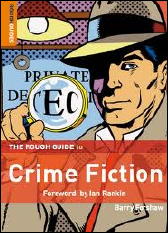
The Penguin Group’s Rough Guides to literature is a smartly-presented series of pocket-sized guidebooks chock full of easily digested information on various literary genres. Barry Forshaw, who edits the Crime Time website, produced The Rough Guide to Crime Fiction [RGTCF], the series’ take on the mystery genre.
While this particular guide definitely has its virtues and can be recommended, the helpful reviewer (especially at a website like Mystery*File) must include a considerable caveat: the coverage of the Golden Age leaves quite a bit to be desired. Dare I say, it’s a bit rough?
The back of the RGTCF notes that “this insider’s book recommends over 200 classic crime novels and mystery authors.†By my count, 248 crime novels are independently listed, along with 21 authors who are specially highlighted. The first book listed was published in 1899, the last in 2007. Thus the 248 books are drawn from a time span of nearly 110 years. Here is how the nearly eleven full decades are represented:
1899-1909 3 books
1910-1919 3 books
1920-1929 4 books
1930-1939 12 books
1940-1949 14 books
1950-1959 11 books
1960-1969 10 books
1970-1979 9 books
1980-1989 16 books
1990-1999 25 books
2000-2007 141 books
Notice anything slightly out of balance here? Perhaps that 57% of the books listed come from the last decade? Or that two-thirds (67%) of the books were published after 1989? Or that 4% of the books come from the first thirty years, 1899-1929?
Barry Forshaw writes in his preface that his Rough Guide “aims to be a truly comprehensive survey, covering every major writer….It covers everything from the genre’s origins and the Golden Age to the current bestselling authors, although a larger emphasis is placed on contemporary writers.†This is a bit of an understatement, perhaps.
I would have no objection to this selective coverage, but for the fact that the book is offered as a “truly comprehensive survey†of this 109 year period. Let’s look at how the earlier decades, particularly those of the Golden Age, are covered, shall we?
First it should be noted that the listed books are divided into fifteen sections. It’s a mite confusing, since some are chronological, more or less, and some go by subject:
1. Origins
2. Golden Age
3. Hardboiled and Pulp
4. Private Eyes
5. Cops
6. Professionals
7. Amateurs
8. Psychological
9. Serial Killers
10. Criminal Protagonists
11. Gangsters
12. Class/Race/Politics
13. Espionage
14. Historicals
15. “Foreignâ€
You can see immediately how there is potential for overlap—and there often is (Hardboiled/Private Eyes). Then there are places where there isn’t any such overlap, though one would have expected it — Golden Age and Amateurs, for example.
The Golden Age was the Age of the Amateur, surely, yet the Amateurs chapter lists twenty books, only one from before 1957 (G. K. Chesterton’s The Innocence of Father Brown) and, indeed, only three (including Innocence) from before 1992.
Similarly, one might have thought that in the Historicals chapter there might have been room for Agatha Christie’s Death Comes as the End (set in ancient Egypt), John Dickson Carr’s The Devil in Velvet (set in Jacobean England), Josephine Tey’s investigative The Daughter of Time (concerning Richard III and the murder of the princes in the Tower) or one of the collections of Lilian de la Torre’s Dr. Samuel Johnson short stories; yet, no, of the 22 listed books, only three come from before 1990, and these are all between 1978 and 1985 (Ellis Peter’s A Morbid Taste for Bones, Peter Lovesey’s The False Inspector Dew and Julian Rathbone’s Lying in State).
It comes to appear that the later chapters mostly exist to provide more opportunities for listing more current authors. Indeed, one could rightly wonder, after reading this book, why the decades of the 1920s and 1930s are considered a “Golden Age†at all. The real Golden Age would seem to have dawned with the new millennium in 2000.
Only thirteen books are listed for the Golden Age:
Margery Allingham, The Tiger in the Smoke
Nicholas Blake, The Beast Must Die
Christianna Brand, Green for Danger
John Dickson Carr, The Three Coffins
Agatha Christie, Murder on the Orient Express
Edmund Crispin, Love Lies Bleeding
Erle Stanley Gardner, The Case of the Turning Tide
Patrick Hamilton, Hangover Square
Geoffrey Household, Rogue Male
Francis Iles, Malice Aforethought
Ngaio Marsh, Surfeit of Lampreys
Dorothy L. Sayers, Gaudy Night
Josephine Tey, The Franchise Affair
Again there is confusion. Is the Golden Age a period or a style? If a style, what are Hangover Square and Rogue Male doing there (couldn’t the one go in psychology, say, and the other espionage)? If a period, why do three of the books come from after the end of World War Two? Does Forshaw view the Golden Age as having lasted into the early 1950s — if so, why? It would have been nice to have some more depth here.
But, more important, Forshaw’s collection of Golden Age book listings seems ever so paltry. It will be recalled that fully 200 of the 248 listed books in RGTCF come from after the 1950s. Where are British writers like R. Austin Freeman (he’s not in Origins either), Freeman Wills Crofts, H. C. Bailey, Michael Innes, Cyril Hare and Gladys Mitchell?
And, damn it, where in hell are the bloody Americans?! It’s rather eccentric to find (if we discount John Dickson Carr) only one American, Erle Stanley Gardner — and this not for a Perry Mason but rather a 1941 Gramps Wiggins tale. In this book you will not find listings for Melville Davisson Post, Earl Derr Biggers, S.S. Van Dine, Ellery Queen, Rex Stout, Mary Roberts Rinehart or Mignon Eberhart.
One might almost conclude that the United States did not exist in the 1920s and 1930s, but for the presence of a slew of hardboiled novels by the usual suspects (Chandler, Hammett, James M. Cain, W. R. Burnett, etc.).
In a moment I found quite regrettable indeed, Forshaw writes: “The superficial ease of churning out potboilers attracted many hacks, such as the prolific but now little read Ellery Queen.†I am utterly baffled by this statement. How anyone who has read “Ellery Queen†in his best period, from the thirties to the fifties, can deem him a “hack†is beyond me (events after 1960, when the Ellery Queen name was loaned out, admittedly are more problematic).
If Forshaw thinks writing books like The Greek Coffin Mystery and Cat of Many Tails was easy, he should turn his hand to mystery writing immediately, because he must surely be a creative genius of the first order.
It’s emblematic of the low standing to which Ellery Queen has fallen that “he†could be treated in such a way. Not only were the cousins behind Ellery Queen (Frederic Dannay and Manfred Lee) great genre writers, they were most generous men who did much to promote mystery writing and genre scholarship. To me it seems rather a shame for a writer following in their footsteps to dismiss them in such a cavalier manner.
There are other omissions of which one could complain. No mention is made of Edgar Wallace and Sax Rohmer — hugely important figures in the history of the English thriller (they were even “bestsellers,†just like John Grisham, who is included here). They could easily have been fitted into the Criminal Protagonist or Gangster chapters.
Philip MacDonald is omitted, even though his brilliant Murder Gone Mad most certainly belongs among the Serial Killer tales.
Margaret Millar and Celia Fremlin are omitted in the Psychology chapter (and everywhere else, for that matter). To be sure, they are not as well-known today as Patricia Highsmith (listed for Strangers on a Train and with a separate info-box for her Ripley series), but they did fine work that influenced other writers in the 1950s though the 1970s and merited inclusion in a collection of nearly 250 books.
Julian Symons, the important and influential mid- to late-20th century crime novelist and mystery critic, is omitted as well; as are Symons’ excellent contemporaries, Michael Gilbert and Andrew Garve.
In the Origins chapter, Forshaw gives brief nods to Edgar Allan Poe, Charles Dickens and Wilkie Collins, but ignores Mary Elizabeth Braddon, Mrs. Henry Wood and Anna Katharine Green. These three women are in my view inferior to the three men, but they certainly should have been mentioned at least. (They have been subjects of quite a lot of academic scholarship of late.)
Many (though not all) of the omissions I suspect can be explained by the fact that the omitted authors were out of print when Forshaw was writing his Rough Guide. And that’s perfectly fine, really, but I think this point should have been conceded up front for the benefit of the less experienced readers who presumably are the Rough Guide’s target demographic, for such innocent neophytes may be considerably misled, with potentially baneful results, in that they will not learn of many good writers or not see good writers at their best.
Ruth Rendell, for example, gets three listings, all for three novels published after 2000. I have read two of them, The Babes in the Wood and The Rottweiler, and in my view they are in no way anywhere comparable to the author’s best work from, say, 1975 to 1995. Where in the world, for example, is A Dark-Adapted Eye or A Demon in My View or A Fatal Inversion?
Similarly, P. D. James gets a listing for The Murder Room and H. R. F. Keating for Breaking and Entering, both post-1999 novels and simply not their best work. (In a separate entry for P. D. James, Forshaw lists “the top five Dalgleish books†— confusingly this list omits the one James book with a full entry, The Murder Room, while including Innocent Blood, a suspense novel in which Dalgleish never appears.)
I have probably sounded quite rough on this Rough Guide, but it does have its rough patches. Nevertheless, the book has merit, especially for people mainly interested in recent crime fiction (especially that published between 2000 and 2007), for whom I think it can be recommended without qualification. There the coverage truly does appear to be “truly comprehensive.â€
I also should mention that I particularly enjoyed the Espionage chapter and that I thought Forshaw’s treatment of Hardboiled books superior to that which he gave the Golden Age detective novel. Perhaps the Golden Age needs a Rough Guide all its own!
Sat 26 Mar 2011
As a followup to the various lists posted here recently of favorite mystery writers and characters over the years, here’s yet another. This one was announced in the Fall 1994 issue of The Armchair Detective, the results of a survey the magazine had taken of its readers earlier that year.
ALL TIME FAVORITE MYSTERY WRITERS
1. Rex Stout
2. Agatha Christie
3. Sir Arthur Conan Doyle
4. Raymond Chandler
5. Ross Macdonald
6. Dorothy L. Sayers
7. Dashiell Hammett
8. Ngaio Marsh
9. Josephine Tey
10. P. D. James
11. Robert B. Parker
12. John Dickson Carr
13. Erle Stanley Gardner
14. Dick Francis
15. James Lee Burke
FAVORITE CURRENTLY ACTIVE MYSTERY WRITERS
1, P. D. James
2. Lawrence Block
3. Robert B. Parker
4. Sue Grafton
5. Dick Francis
6. Tony Hillerman
7. Ed McBain
8. James Lee Burke
9. Martha Grimes
10. Elizabeth George
FAVORITE MYSTERY NOVELS
1. The Maltese Falcon
2. The Murder of Roger Ackroyd
3. The Hound of the Baskervilles
4. Gaudy Night
5. The Daughter of Time
FAVORITE MYSTERY SERIES CHARACTER
1. Sherlock Holmes
2. Nero Wolfe
3. Hercule Poirot
4. Miss Marple
5. Lew Archer
WRITER WHO WILL STILL BE READ FIFTY YEARS FROM NOW
1. P. D. James
2. Tony Hillerman
3. Dick Francis
4. Robert B. Parker
5T. Ruth Rendell
5T. Lawrence Block
On the reverse page of the poll results were the Mystery Bestseller Lists for May-June 1994, as reported by several specialty mystery bookshops:
HARDCOVERS
1. “K” Is for Killer, Sue Grafton
2. Tunnel Vision, Sara Paretsky
3. Shooting at Loons, Margaret Maron
4. The Burglar Who Traded Ted Williams, Lawrence Block
5T. Dead Man’s Heart, Aaron Elkins
5T. Tickled to Death, Joan Hess
7. Till the Butchers Cut Him Down, Marcia Muller
8. The Concrete Blonde, Michael Connelly
9. How to Murder Your Mother-in-Law, Dorothy Cannell
10. Dixie City Jam, James Lee Burke
PAPERBACKS
1. The Track of the Cat, Nevada Barr
2. Missing Joseph, Elizabeth George
3T. To Live and Die in Dixie, Kathy Hogan Trocheck
3T. Blooming Murder, Jean Hager
5. Dead Man’s Island, Carolyn Hart
6. Cruel and Unusual, Patricia Cornwell
7. J Is for Judgment, Sue Grafton
8T. Bootlegger’s Daughter, Margaret Maron
8T. Share in Death, Deborah Crombie
8T. Poisoned Pins, Joan Hess
11. Twice in a Blue Moon, Patricia Moyes
Wed 9 Feb 2011
PRIME TIME SUSPECTS (Crime & Mystery Television)
by TISE VAHIMAGI
Part 1: Basic Characteristics (A Swift Overview)
It is hardly surprising, perhaps, that one of the main reasons why so little has been written about the TV crime and mystery genre is that while everyone knows what constitutes as crime drama, no one has been able to define quite what it is. As has often noted before, the general consensus is that the crime and mystery, at its core, is a puzzle.
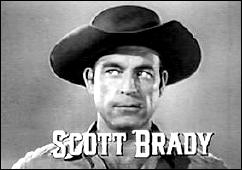
Essentially, when not a Whodunit (identifying the criminal) it is a Whydunit (the reasons for the crime). While the puzzle factor does indeed lie at the heart of the genre, the shape and structure of the puzzle may adopt a myriad of forms.
Certain basic characteristics can be deduced from the presentations themselves. It is more often than not contemporary. It has an urban setting (the city). It involves a crime of some nature (murder and robbery being among the foremost).
But these, of course, are not the mandatory hallmarks of a TV Crime & Mystery. The Western, for instance, has lawmen and outlaws, gunfighters and hold-ups, but they are hardly crime and mystery. Although in keeping with the TV vein here, the 1870s investigations of gunfighter/private eye for-hire Shotgun Slade (syndicated, 1959-61) and the police procedurals of Denver police detective Whispering Smith (NBC, 1961) may well be the cause for some constructive argument. And not forgetting Richard Boone’s early forensics in NBC’s Hec Ramsey (1972-74).
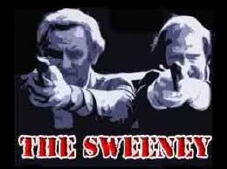
It has been expressed before that realism rather than stylization, a sense of authenticity and not outright adventure are the keynotes. The settings, the look, the narrative, and the procedure are all intended to be realistic. Or at least plausible. Content may often appear to be ritualized and behaviour somewhat stereotyped, but the characters are (in the majority of cases, at least) individuals rather than archetypes.
In this view, the TV genre is at times variably flexible and tends to be audience-led. It often bows to contemporary flavours and fashions. Its richest moments, however, offer access to a world not normally afforded the ordinary citizen, the slightly sinister world of the dogged detective or the cynical street cop, the nocturnal prowling of the private eye or the ice-cold operation of a secret agent.
The spirit of the genre is that law and order must be maintained at all costs, or, from the flip side of the coin, outwitted, outsmarted, and even defeated.
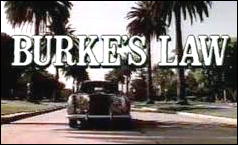
It can take the form of the pursuit: quiet and observational (as in Maigret [BBC, 1960-63], Agatha Christie’s Poirot [ITV, 1989-93; 1995]) or physically fast and furious (The Sweeney [ITV, 1975-76; 1978], Starsky and Hutch [ABC, 1975-79]), or even the long-form (The Fugitive [ABC, 1963-67]). It can be a psychological chess game (Cracker [ITV, 1993-96]), a medical examination (Quincy ME [NBC, 1976-83]), or a forensic probe (CSI: Crime Scene Investigation [CBS, 2000-present]).
The setting can range from Miss Marple’s cozy English village of St. Mary Mead to the dangerous night-time streets of The Wire’s Baltimore. Then there’s the milieu, the occupational routine of the sleuth. Or the social and/or professional world they inhabit. The hospital/medical milieu (Diagnosis Murder [CBS, 1993-2001]). The clerical milieu (Father Dowling Mysteries [NBC, 1989; ABC, 1990-91]). Wealthy eccentrics (Burke’s Law [ABC, 1963-65]). Horse racing (The Racing Game [ITV, 1979-80]). Et cetera, et cetera…
Because it contains so many elements and facets related to crime, engaging the viewer from a variety of directions, the TV genre can not be defined precisely.
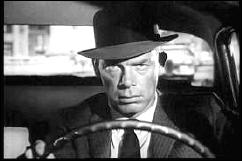
The basic story-telling characteristics are an extrapolation of the forms and formats of, in one-part, the literary genre, one-part the radio drama and one-part the cinema. The TV form (not unlike the literary form) can embrace almost any genre, and can pursue any narrative strand. It can be set in the past or in the present. It can select as its point of narrative focus the law enforcer, the criminal, or the innocent bystander. It can be a TV play, a TV film, a miniseries/limited serial, an episodic series, or a series of self-contained episodes or thematic episodes (the anthology).
The detective or sleuth character is usually the leading figure in the narrative. Leading the path that the viewer is obliged to take, they follow the pattern of the investigation. It is the sleuth’s particular application to the details of the crime that provides the dramatic interest or action (whether the gung-ho tactics of a Lt. Frank Ballinger of M Squad [NBC, 1957-60] or the careful scrutiny of a Hercule Poirot).
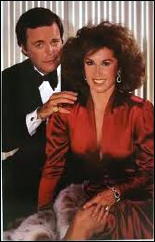
The sleuth may have an assistant (Sherlock Holmes and Dr. Watson) or a partner (Inspector Morse and Sergeant Lewis). Or may consist of the a team (Ironside [NBC, 1967-75]) or a specialised squad (the cold cases unit of Waking the Dead [BBC, 2000-present]).
The subgenre of the private detective provides, usually, the loner (Peter Gunn [NBC, 1958-60; ABC, 1960-61], Shoestring [BBC, 1979-80]). Among the subdivisions are the amateur sleuths (Hettie Bainbridge Investigates [BBC, 1996-98], Kate Loves a Mystery [NBC, 1979]) and the sleuth couple (The Thin Man [NBC, 1957-59], Hart to Hart [ABC, 1979-84], Wilde Alliance [ITV, 1978]).
They can belong to established organisations (The FBI, Scotland Yard, MI5, the CIA, the French Sûreté, Interpol) or carry out their assignments on behalf of made-up agencies (U.N.C.L.E., C.O.N.T.R.O.L., Nemesis, CI5).
The most popular, and the most associated with the TV genre, has been the police drama. Mainly the Police Detective (Columbo [NBC, 1971-77; ABC, 1989-93], Inspector Morse [ITV, 1987-2000]) but also the Police Officer (Dixon of Dock Green [BBC, 1955-76], Joe Forrester [NBC, 1975-76]).
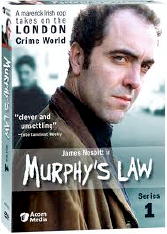
Among the subdivisions here are the undercover cop (Wiseguy [CBS, 1987-90], Murphy’s Law [BBC, 2001-2007]), the internal affairs/investigations cop (Between the Lines [BBC, 1992-94]), as well as the mobile cop (Z Cars [BBC, 1962-78], Highway Patrol [syndicated, 1955-59], CHiPs [NBC, 1977-83]).
The Adventurer. Thrill seeker; often on the lookout for dangerous and exciting experiences. Perhaps a round-up of the expected suspects along these lines would include Roger Moore’s The Saint (ITV, 1962-69), Robert Beatty’s Bulldog Drummond (in “The Ludlow Affair” pilot [ITV, 1958] for Douglas Fairbanks Jr Presents), The Agatha Christie Hour (with “The Case of the Discontented Soldier” [ITV, 1982]), Raffles (ITV, 1977), Josephine Tey’s Brat Farrar (BBC/A&E, 1986), Modesty Blaise (pilot; ABC, 1982), The Lone Wolf (syndicated, 1954), Jason King (ITV, 1971-72), The Baron (ITV, 1966-67) and, since this type of programming seems to have the greatest appeal to casual TV viewers, the countless others that we could all name.
The Private Detective (or Private Eye) has had a long and popular run in the TV genre. In the traditional American sense (77 Sunset Strip [ABC, 1958-64] as team, The Rockford Files [NBC, 1974-80] as loner) as well as the more British tradition of the ‘consulting detective’ (The Adventures of Sherlock Holmes [ITV, 1984-85], Agatha Christie’s Partners in Crime [ITV, 1983-84]), along with the occasional UK leanings toward the American style (Public Eye [ITV, 1965-75]).
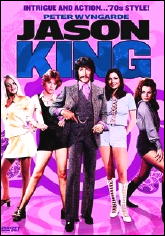
The Hard-Boiled sleuth (Mickey Spillane’s Mike Hammer [syndicated, 1957-59]) comes into this category. Also the amateur sleuthings of The Snoop Sisters (NBC, 1973-74) and The Beiderbecke Affair (ITV, 1985), either by design (a sense of over-curiosity) or by accident.
Perhaps as a footnote to the private detective division is the insurance investigator (John Ireland in The Cheaters [ITV, 1962-63]) or investigator for the diamond industry (Broderick Crawford in King of Diamonds [syndicated, 1961]).
The Lawyer sleuth and the Legal Procedural offer stories combining both private investigation and courtroom drama (Perry Mason [CBS, 1957-66], Sam Benedict [NBC, 1962-63]), and in more recent times the format has been used for corporate as well as constitutional enquiry (L.A. Law [NBC, 1986-94], Judge John Deed [BBC, 2001-2007]).
Spies, government agents and espionage have been in the literary genre almost as long as the crime and mystery genre itself. However, for the most part, their activities on both the printed page and the small screen have been popular for as long as there has been established political enemies to fight – which means, the genre was popular for most of the last century and remains (with the threat of terrorism), unfortunately, popular today.
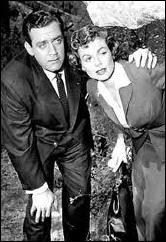
The television espionage genre has presented the spy (the Anglo-U.S. side, of course) as either a lone crusader (during the communist witch-hunt early 1950s; I Led Three Lives [syndicated, 1953-56]) or as part of a secret, highly organised corporation, an element that reached its peak of popularity (quite often as parody) during the 1960s (The Avengers [ITV, 1961-69], The Man from U.N.C.L.E. [NBC, 1964-68]).
Later, Callan (ITV, 1967; 1969-72) returned the genre to a more serious track, culminating in John le Carré’s Tinker, Tailor, Soldier, Spy in 1979. The highly popular Spooks (BBC, 2002-present; in U.S. as MI-5), for instance, features a youthful team of operatives involved in anti-terrorist activities. And so it goes…
The Period Sleuth has been popular on UK television since the early 1970s. A winning combination of costume drama and detective fiction, the works of such authors as Christie, Conan Doyle, Dorothy L. Sayers, G.K. Chesterton, and others, have produced the sagas of Lord Peter Wimsey (BBC, 1972-75), Father Brown (ITV, 1974), Campion (BBC, 1989), the ITV Sherlock Homes series (with Jeremy Brett; 1984 to 1994), Agatha Christie’s Poirot (ITV, 1989-93; 1995) and The Mrs Bradley Mysteries (BBC, 1998-99). The fascinating Canadian series Murdoch Mysteries (Citytv, 2008-present) continues to fascinate.
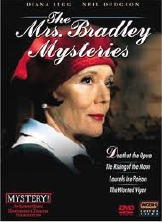
Occasionally, there are observations on contemporary life from the distant viewpoint of ancient Rome and Medieval England (the Falco and Brother Cadfael stories, respectively). The most popular period, it seems, is the fairly recent past, roughly the late Victorian era of Sherlock Holmes and Jack the Ripper to the ‘nostalgic’ decade of the 1960s with Crime Story (NBC, 1986-88) and Heartbeat (ITV, 1992-2010).
A small note on the future and/or fantasy as ‘setting’: Isaac Asimov’s Caves of Steel (BBC, 1964); The Outer Limits (ABC) episodes “The Invisibles” and “Controlled Experiment” (both from 1964); The X Files (Fox, 1993-2002); Star Cops (BBC, 1987).
The Scientific Sleuth has surfaced intermittently over the decades (The Hidden Truth [ITV, 1964], The Expert [BBC, 1968-69; 1971; 1976]) until 2000 when CSI blazed a trail that brought the work of forensics experts to the fore.
Weapons and ballistics experts have featured in past stories, and currently Dexter (Showtime, 2006-present) has amassed an unexpectedly popular following by portraying the work of a blood splatter specialist (alongside his alter ego as a serial killer). The criminal psychologist has also gained a following over the years, especially with the success of Cracker in 1993 (Profiler [NBC, 1996-2000], Wire in the Blood [ITV, 2002-2008]).
Needless to say, there is more to the TV Crime & Mystery than just the above basic descriptions. In time, I intend to discuss aspects of the TV Gaslight Era drama, the Underworld, the Psychological Thriller, and other related TV forms.
In Part Two of PRIME TIME SUSPECTS, I will trace early examples of the genre (from 1930s/1940s TV works by Christie, Edgar Wallace, G.K. Chesterton, Patrick Hamilton and Edgar Allan Poe, among others), leading up to the episodic series of the late 1940s (such as The Plainclothesman, 1949-54).
Note: The introduction to this series of columns on TV mysteries and crime shows may be found here.
Wed 6 Oct 2010
150 Favorite Golden Age British Detective Novels:
A Very Personal Selection, by Curt J. Evans
Qualifications are the writers had to publish their first true detective novel between 1920 and 1941 (the true Golden Age) and be British or close enough (Carr). So writers like, say, R. Austin Freeman, Michael Gilbert and S. S. Van Dine get excluded.
I wanted to get outside the box a bit and so I’m sure I made what will strike some as some odd choices. This is a personal list. If I were making a totally representative list John Dickson Carr’s The Three Coffins, Nicholas Blake’s The Beast Must Die, Michael Innes’ Lament for a Maker, Anthony Berkeley’s The Poisoned Chocolates Case, Sayers’ Gaudy Night, etc., would all be there). And lists evolve over time. It’s highly likely, for example, that as I read more of Anthony Wynne and David Hume, for example, they would get more listings.
Also I excluded great novels like And Then There Were None, The Burning Court and Trial and Error, for example, because I felt like they didn’t fully fit the definition of true detective novels. In any list list I would make of great mysteries, they would be there.
If people conclude from this list that my five favorite Golden Age generation British detective novelists are Christie, Street, Mitchell, Carr and Bruce, that would be fair enough, though I must add that they were very prolific writers, so more listings shouldn’t be so surprising.
The 150 novels break down by decade as follows:
1920s 9 (6%)
1930s 87 (58%)
1940s 30 (20%)
1950s and beyond 24 (16%)
A pretty graphic indicator of my preference for the 1930s!
Also, of the 61 writers, I believe 40 are men and 21 women — I hope my count is right! — which challenges the conventional view today that most British detective novels of the Golden Age were produced by women. Of these, 31, or just over half, eventually became members of the Detection Club. I exclude a few of these luminaries, such as Ronald Knox and Victor Whitechurch (am I anti-clerical?!).
JOHN DICKSON CARR (8)
The Crooked Hinge (1938)
The Judas Window (1938) (as Carter Dickson)
The Reader Is Warned (1939) (as Carter Dickson)
The Man Who Could Not Shudder (1940)
The Case of the Constant Suicides (1941)
The Gilded Man (1942) (as Carter Dickson)
She Died a Lady (1944) (as Carter Dickson)
He Who Whispers (1946)
â— It’s probably sacrilege not to have The Three Coffins on the list (especially when you have The Gilded Man!), but when I read Coffins I enjoyed it for the horror more than the locked room, which seemed overcomplicated too me (need to reread though).
AGATHA CHRISTIE (8)
The Murder of Roger Ackroyd 1926
Murder at the Vicarage 1930
The ABC Murders 1936
Death on the Nile 1937
One, Two, Buckle My Shoe 1940
Five Little Pigs 1942
A Murder Is Announced 1950
The Pale Horse 1961
â— Haven’t reread The ABC Murders recently; was somewhat disappointed with Murder on the Orient Express when rereading and thus excluded from the list. And Then There Were None regretfully excluded, because I wasn’t sure it really qualifies as a detective story (there’s not really a detective and the solution comes per accidens).
GLADYS MITCHELL (8)
Speedy Death (1929)
The Mystery of a Butcher’s Shop (1929)
The Saltmarsh Murders (1932)
Death at the Opera (1934)
The Devil at Saxon Wall (1935)
St. Peter’s Finger (1938)
The Rising of the Moon (1944)
Late, Late in the Evening (1976)
â— A true original, but not to everyone’s taste.
JOHN RHODE (MAJOR CECIL JOHN CHARLES STREET) (8)
The Davidson Case (1929)
Shot at Dawn (1934)
The Corpse in the Car (1935)
Death on the Board (1937)
The Bloody Tower (1938)
Death at the Helm (1941)
Murder, M.D. (1943) (as Miles Burton)
Vegetable Duck (1944)
â— The Golden Age master of murder means, underrated in my view.
LEO BRUCE (8)
Case for Three Detectives (1936)
Case with Ropes and Rings (1940)
Case for Sergeant Beef (1947)
Our Jubilee is Death (1959)
Furious Old Women (1960)
A Bone and a Hank of Hair (1961)
Nothing Like Blood (1962)
Death at Hallows End (1965)
â— In print but underappreciated, he carried on the Golden Age witty puzzle tradition in a tarnishing era for puzzle lovers.
J. J. CONNINGTON (5)
The Case With Nine Solutions (1929)
The Sweepstake Murders (1935)
The Castleford Conundrum (1932)
The Ha-Ha Case (1934)
In Whose Dim Shadow (1935)
â— An accomplished, knowledgeable puzzler.
E.C.R. LORAC (EDITH CAROLINE RIVETT) (5)
Death of An Author (1935)
Policemen in the Precinct (1949)
Murder of a Martinet (1951)
Murder in the Mill-Race (1952)
The Double Turn (1956) (as Carol Carnac)
â— Has taken a back seat to the Crime Queens, but was very prolific and often quite good (my favorites, as can be seen, are more from the 1950s, when she became a little less convention bound).
E. R. PUNSHON (5)
Genius in Murder (1932)
Crossword Mystery (1934)
Mystery of Mr. Jessop (1937)
Ten Star Clues (1941)
Diabolic Candelabra (1942)
â— Admired by Sayers, this longtime professional writer (he published novels for over half a century) is underservingly out of print.
MARGERY ALLINGHAM (4)
Death of a Ghost (1934)
The Case of the Late Pig (1937)
Dancers in Mourning (1937)
More Work for the Undertaker (1949)
â— Her imagination tends to overflow the banks of pure detection, but these are very good, genuine puzzles.
G. D. H. and MARGARET COLE (4)
Burglars in Bucks (1930)
The Brothers Sackville (1936)
Disgrace to the College (1937)
Counterpoint Murder (1940)
â— Clever tales by husband and wife academics not altogether justly classified as “Humdrums.”
FREEMAN WILLS CROFTS (4)
The Sea Mystery (1928)
Sir John Magill’s Last Journey (1930)
The Hog’s Back Mystery (1933)
Mystery on Southampton Water (1934)
â— The “Alibi King,” he’s more paid lip service (particularly for genre milestone The Cask) than actually read today, but at his best he is is worth reading for puzzle fans.
NGAIO MARSH (4)
Artists in Crime (1938)
Seath in a White Tie (1938)
Surfeit of Lampreys (1940)
Opening Night (1951)
â— Art, society and theater all appealingly addressed by a very witty writer, with genuine detection included.
DOROTHY L. SAYERS (4)
Strong Poison (1930)
The Five Red Herrings (1931)
Have His Carcase (1932)
Murder Must Advertise (1933)
â— As can be guessed I prefer middle period Sayers — less facetious than earlier books, but also less self-important than later ones.
HENRY WADE (4)
The Dying Alderman (1930)
No Friendly Drop (1931)
Lonely Magdalen (1940)
A Dying Fall (1955)
â— Very underrated writer — some other good works (Mist on the Saltings, Heir Presumptive) were left out because they are more crime novels.
JOSEPHINE BELL (3)
Murder in Hospital (1937)
From Natural Causes (1939)
Death in Retirement (1956)
â— Far less known than the Crime Queens, but a worthy if inconsistent author.
NICHOLAS BLAKE (3)
A Question of Proof (1935)
Thou Shell of Death (1936)
Minute for Murder (1949)
â— His most important book in genre history is The Beast Must Die, but I prefer these as puzzles.
CHRISTIANNA BRAND (3)
Death in High Heels (1941)
Green for Danger (1945)
Tour de Force (1955)
â— One of the few who can match Christie in the capacity to surprise while playing fair.
JOANNA CANNAN (3)
They Rang Up the Police (1939)
Murder Included (1950)
And Be a Villain (1958)
â— Underrated mainstream novelist who dabbled in detection.
BELTON COBB (3)
The Poisoner’s Mistake (1936)
Quickly Dead (1937)
Like a Guilty Thing (1938)
â— Almost forgotten, but an enjoyable, humanist detective novelist (B. C. worked in the publishing industry and was the son of novelist Thomas Cobb, who also wrote mysteries)
JEFFERSON FARJEON (3)
Thirteen Guests (1938)
The Judge Sums Up (1942)
The Double Crime (1953)
â— A member of the famous and talented Farjeon family (both his father Benjamin and sister Eleanor were notable writers), he wrote mostly thrillers but produced some more genuine detection.
ELIZABETH FERRARS (3)
Give a Corpse a Bad Name (1940)
Neck in a Noose (1942)
Enough to Kill a Horse (1955)
â— Came in at the tail-end of the Golden Age, like Brand, though she was more prolific (and not as good). She started with an appealing Lord Peter Wimsey knock-off (Toby Dyke), but eventually helped found the more middle class and modern “country cottage” mystery (downsized from the country house).
CYRIL HARE (3)
When the Wind Blows (1949)
An English Murder (1951)
That Yew Trees Shade (1954)
â— Another one who came in near the end of the Golden Age proper, his best is considered to be Tragedy at Law (see P. D. James), but I like best the tales he produced in postwar years.
R. C. WOODTHORPE (3)
The Public School Murder (1932)
A Dagger in Fleet Street (1934)
The Shadow on the Downs (1935)
â— A surprisingly underrated writer, witty and clever in the the way people like English mystery writers to be (why has no one reprinted him?).
ROGER EAST (2)
The Bell Is Answered (1934)
Twenty-Five Sanitary Inspectors (1935)
â— Another mostly forgotten farceur of detection.
GEORGE GOODCHILD & BECHHOFER ROBERTS (2)
Tidings of Joy (1934)
We Shot an Arrow (1939)
â— Working together, these two authors (one, Goodchild, a prolific thriller writer) produced some fine detective novels (their best-known works are a pair based on real life trials).
GEORGETTE HEYER (2)
A Blunt Instrument (1938)
Detection Unlimited (1953)
â— Better known for her Regency romances (still read today), Heyer produced some admired exuberantly humorous (if a bit formulaic) detective novels (plotted by her husband).
ELSPETH HUXLEY (2)
Murder on Safari (1938)
Death of an Aryan (1939)
â— After a decent apprentice genre effort, this fine writer produced two fine detective novels, interestingly set in Africa, with an excellent series detective.
MICHAEL INNES (2)
The Daffodil Affair (1942)
What Happened at Hazelwood (1946)
â— So exuberantly imaginative, he is hard to contain within the banks of true detection, but these are close enough, I think, and I prefer them to his earlier, better-known works.
MILWARD KENNEDY (2)
Death in a Deck Chair (1930)
Corpse in Cold Storage ((1934)
â— A neglected mainstay of the Detection Club, hardly read today.
C. H. B. KITCHIN (2)
Death of My Aunt (1929)
Death of His Uncle (1939)
â— These are fairly well-known attempts at more literate detective fiction, by an accomplished serious novelist.
PHILIP MACDONALD (2)
Rynox (1930)
The Maze (1932)
â— A writer who often stepped into thriller territory (and produced some classics of that form), he produced with these two books closer efforts at true detection (indeed, the latter is a pure puzzle)
CLIFFORD WITTING (2)
Midsummer Murder (1937)
Measure for Murder (1941)
â— Clever efforts by an underappreciated author.
FRANCIS BEEDING
He Should Not Have Slipped! (1939)
â— About the closest I would say that this author (actually two men) came to full dress detection.
ANTHONY BERKELEY
Not to be Taken (1938)
â— A true detective novel and first-rate village poisoning tale by this important figure in the mystery genre, who often tweaked conventional detection.
DOROTHY BOWERS
The Bells of Old Bailey (1947)
â— Best of this literate lady’s detective novels, her last before her untimely death.
CHRISTOPHER BUSH
Cut-Throat (1932)
â— Prolific writer who is not my favorite, but I liked this one, with its clever alibi problem.
A. FIELDING
The Upfold Farm Mystery (1931)
â— Uneven, prolific detective novelist, but this one has much to please.
ROBERT GORE-BROWNE
Murder of an M.P.! (1928)
â— One of my favorite 1920s detective novels, by a mere dabbler in the field.
CECIL FREEMAN GREGG
Expert Evidence (1938)
â— Surprisingly cerebral effort by a “tough” British thriller writer.
ANTHONY GILBERT
Murder Comes Home (1950)
â— My favorite books by this author tend to be more suspense than true detection.
JAMES HILTON
Murder at School (1931)
â— Good foray into detection by well-regarded straight novelist.
RICHARD HULL
The Ghost It Was (1936)
â— About the closest I would say that this crime novelist came to detection.
DAVID HUME
Bullets Bite Deep (1932)
â— Though this series later devolved into beat ’em up thrillers, this first effort has genuine detection (and American gangsters). More reading of this author’s other series may yield additional results.
IANTHE JERROLD
Dead Man’s Quarry (1930)
â— One of the two detective novels by a forgotten member of the Detection Club, more a mainstream novelist (though forgotten in that capacity as well).
A. G. MACDONELL
Body Found Stabbed (1932) (as John Cameron)
â— Detective novel by writer better known for his satire.
PAUL MCGUIRE
Burial Service (1939)
â— Mostly forgotten Australian-born writer of detective fiction, mostly set in Britain. This tale, his finest, is not. It one of the most original of the period.
JAMES QUINCE
Casual Slaughters (1935)
â— A very good, virtually unknown village tale.
LAURENCE MEYNELL
On the Night of the 18th…. (1936)
â— More realistic detective novel for the place and period, in terms of its depiction of often unattractive human motivations, by a writer who veered more toward thrillers and crime novels.
A. A. MILNE
The Red House Mystery (1922)
â— A well-known classic, mocked by Chandler — but, hey, what a sourpuss he was, what?
EDEN PHILLPOTTS
The Captain’s Curio (1933)
â— Counted because his true detection started in the Golden Age. His best work, however, is found in crime novels (and straight novels)
E. BAKER QUINN
One Man’s Muddle (1937)
â— A strikingly hardboiled tale by a little-known author who was written of on this website fairly recently.
HARRIET RUTLAND
Knock, Murderer, Knock! (1939)
â— Mysterious individual who wrote three acidulous detective novels. This is the first, a classic spa tale.
CHRISTOPHER ST. JOHN SPRIGG
The Perfect Alibi (1934)
â— A fine farceur of detection, whose genre talent was purged when he became a humorless Stalinist ideologue (he was killed in action in Spain).
W. STANLEY SYKES
The Missing Moneylender (1931)
â— Controversial because of comments about Jews (as the title should suggest), yet extremely clever.
JOSEPHINE TEY
The Franchise Affair (1948)
â— Genuine detection, though veering into crime novel territory (and veering very well, thank you).
EDGAR WALLACE
The Clue of the Silver Key (1930)
â— One of the closest attempts at true detection by the famed thriller writer.
ETHEL LINA WHITE
She Faded Into Air (1941)
â— See Edgar Wallace. A classic vanishing case, with some of the author’s patented shuddery moments.
ANTHONY WYNNE
Murder of a Lady (1931)
â— Fine locked room novel by an author who tended to be too formulaic but could be good (can probably add one or two more as I read him).
Editorial Comment: Coming up soon (as soon as I can format it for posting) and covering some of the same ground as Curt’s, is a list of “100 Good Detective Novels,” by Mike Grost. The emphasis is also on detective fiction, so obviously some of the authors will be the same as those in Curt’s list, but Mike doesn’t restrict himself to British authors, and the time period is much wider, ranging from 1866 to 1988, and the actual overlap is very small.

